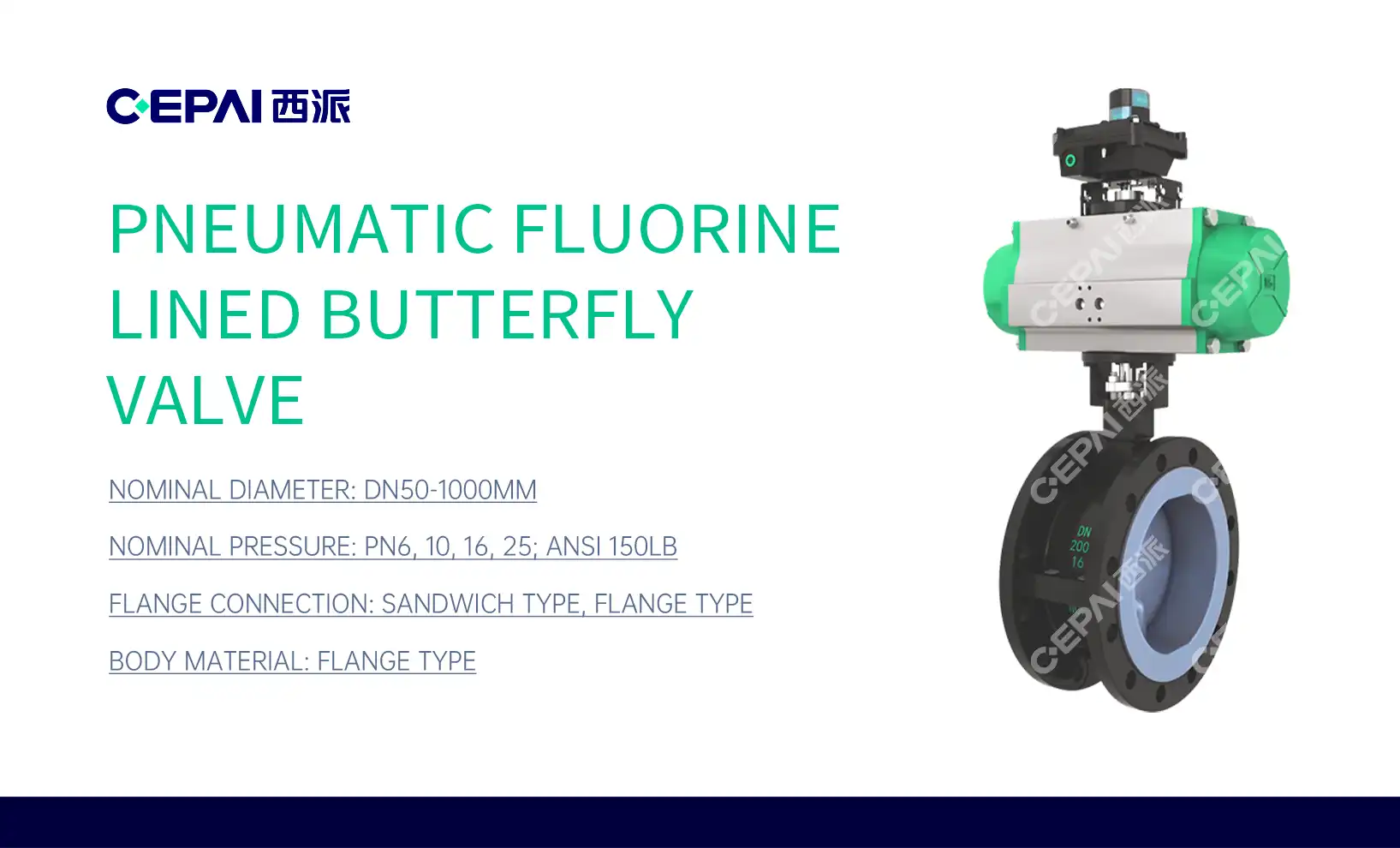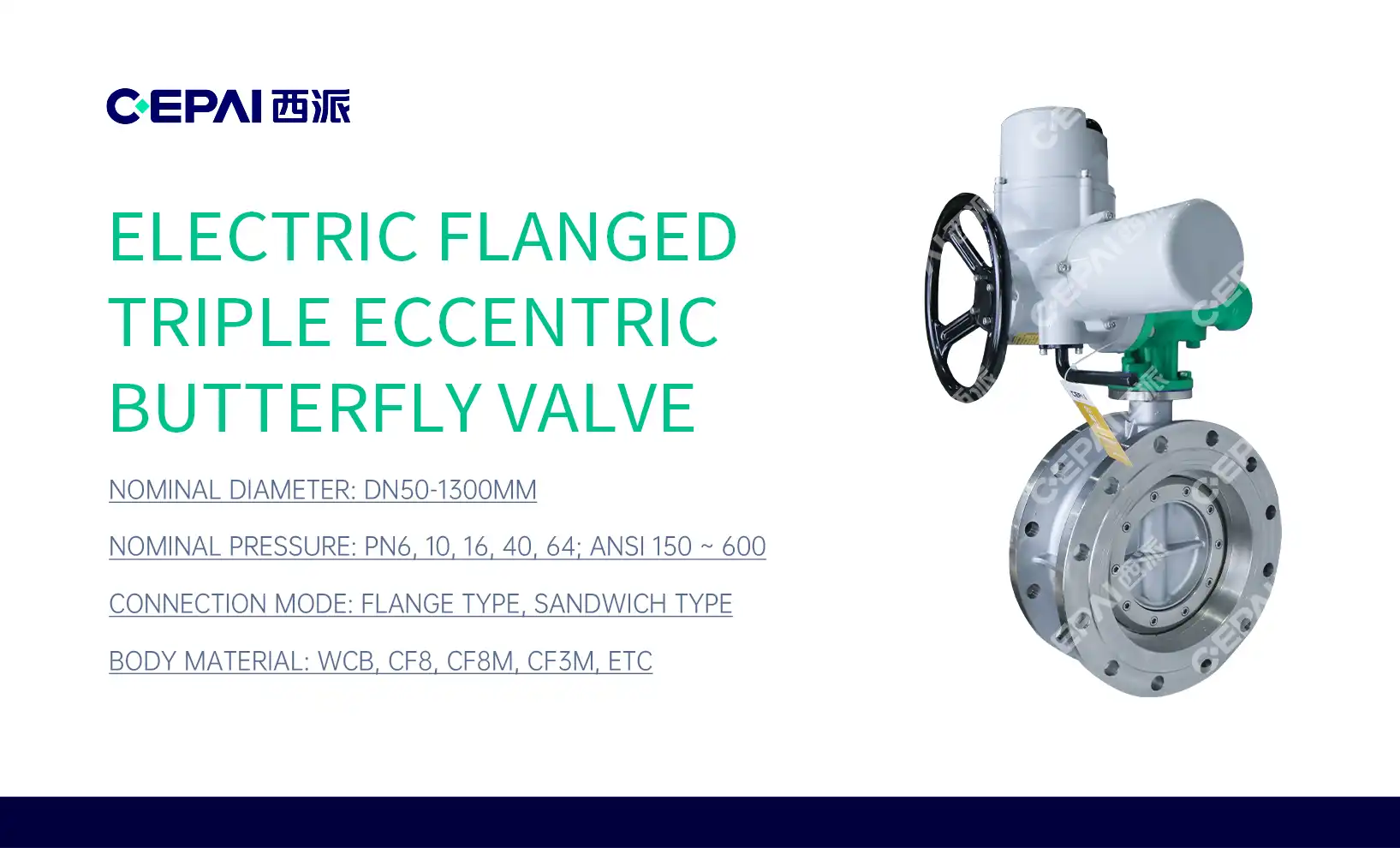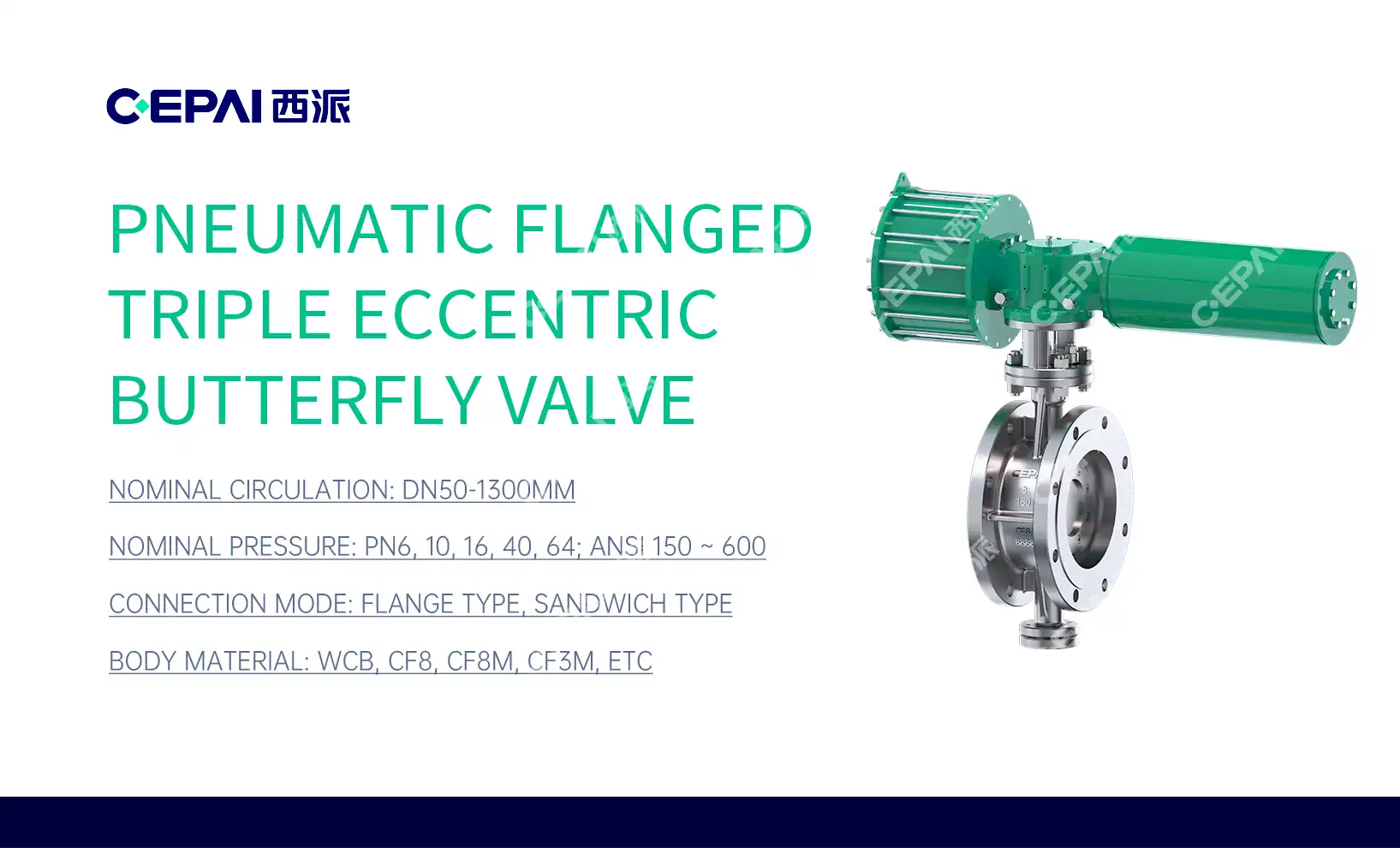The Engineer’s Guide to Three Eccentric Butterfly Valves
Welcome to the comprehensive guide on three eccentric butterfly valves, an essential component in various industrial applications. This article delves into the intricacies of these specialized valves, exploring their unique design, operational principles, and advantages. Whether you're a seasoned engineer or a curious professional, this guide will provide valuable insights into the world of three eccentric butterfly valves. We'll examine their construction, functionality, and the critical role they play in fluid control systems. By the end of this article, you'll have a thorough understanding of why these valves are crucial in industries ranging from oil and gas to water treatment.

Understanding the Fundamentals of Three Eccentric Butterfly Valves
Design Principles of Three Eccentric Butterfly Valves
Three eccentric butterfly valves represent a significant advancement in valve technology. Unlike traditional butterfly valves, these valves incorporate three distinct offsets in their design. The first offset moves the stem away from the pipe centerline, the second offset positions the stem behind the disc centerline, and the third offset creates a conical seating surface. This unique configuration results in a cam-like action during operation, reducing wear and enhancing sealing performance.
The valve's disc is typically made from durable materials such as stainless steel or high-performance alloys, ensuring longevity and resistance to corrosive fluids. The seat, often composed of resilient materials like PTFE or elastomers, provides a tight seal when the valve is closed. This design minimizes friction during operation and allows for bidirectional sealing, a crucial feature in many industrial applications.
Operational Mechanism of Three Eccentric Butterfly Valves
The operation of three eccentric butterfly valves is a marvel of engineering. As the valve opens, the disc swings away from the seat, creating a clear flow path. The triple offset design ensures that the disc completely disengages from the seat before rotating, significantly reducing wear and extending the valve's service life. During closure, the cam-like action brings the disc into precise alignment with the seat, creating a tight seal.
This mechanism allows for excellent throttling capabilities, making these valves ideal for flow control applications. The smooth operation reduces torque requirements, which in turn decreases the size and cost of actuators needed to operate the valve. Additionally, the design permits both manual and automated operation, offering flexibility in various industrial settings.
Key Components and Materials
Three eccentric butterfly valves comprise several critical components. The body, typically made of cast or ductile iron, provides structural integrity and houses the internal parts. The disc, responsible for controlling flow, is often constructed from materials like stainless steel or nickel-aluminum bronze for durability and corrosion resistance. The stem, which transmits rotational force to the disc, is usually made of high-strength stainless steel.
Seat materials play a crucial role in the valve's performance. Common options include PTFE, RTFE, and various elastomers, chosen based on the specific application requirements. These materials ensure a tight seal and can withstand high temperatures and pressures. The packing and gaskets, essential for preventing leaks, are selected for their compatibility with the process fluid and operating conditions.
Applications and Advantages of Three Eccentric Butterfly Valves
Industrial Applications
Three eccentric butterfly valves find extensive use across various industries due to their versatile design and reliable performance. In the oil and gas sector, these valves are crucial for controlling the flow of crude oil, natural gas, and refined products in pipelines and processing facilities. Their ability to handle high pressures and temperatures makes them ideal for these demanding environments.
In water treatment plants, three eccentric butterfly valves play a vital role in managing water flow and distribution. Their excellent sealing properties prevent contamination and ensure precise control over water quality. The power generation industry relies on these valves for steam control in turbines and boilers, where their tight shut-off capabilities and low-maintenance design are particularly valuable.
Advantages Over Traditional Valve Designs
Three eccentric butterfly valves offer several advantages over traditional valve designs. Their unique configuration results in reduced seat wear, leading to longer service life and decreased maintenance requirements. The cam-like action during operation ensures a tighter seal and lower operating torque, improving overall efficiency and reducing energy consumption.
These valves also provide excellent flow characteristics, with minimal pressure drop when fully open. This feature is particularly beneficial in applications where maintaining system pressure is critical. Additionally, the compact design of three eccentric butterfly valves makes them ideal for installations where space is limited, offering a lightweight and cost-effective solution compared to other valve types.
Performance in Extreme Conditions
One of the standout features of three eccentric butterfly valves is their ability to perform reliably in extreme conditions. These valves can handle a wide range of temperatures, from cryogenic applications to high-temperature steam services. Their robust construction allows them to withstand high pressures, making them suitable for use in demanding industrial processes.
In corrosive environments, such as chemical processing plants, three eccentric butterfly valves can be manufactured with specialized materials to resist degradation. This adaptability extends their applicability to a broad spectrum of industries and processes. Furthermore, their design allows for excellent performance in both high-flow and low-flow scenarios, providing versatility in various operational conditions.
Maintenance and Troubleshooting of Three Eccentric Butterfly Valves
Routine Maintenance Procedures
Proper maintenance is crucial for ensuring the longevity and optimal performance of three eccentric butterfly valves. Regular inspections should be conducted to check for signs of wear, corrosion, or damage to the disc, seat, and stem. The packing should be examined for leaks and adjusted or replaced as necessary. Lubrication of moving parts, particularly the stem and bearings, is essential to maintain smooth operation and prevent premature wear.
Periodic cycling of the valve, especially in applications where it remains in one position for extended periods, helps prevent seizing and ensures continued smooth operation. It's also important to clean the valve regularly, removing any debris or buildup that could affect its performance. For valves in critical applications, predictive maintenance techniques such as vibration analysis or acoustic emissions testing can help identify potential issues before they lead to failure.
Common Issues and Troubleshooting
Despite their robust design, three eccentric butterfly valves can encounter operational issues. One common problem is leakage, which may be caused by wear on the seat or disc, improper alignment, or damage to the sealing surfaces. In such cases, inspecting and replacing worn components or realigning the valve may be necessary. Another issue is difficulty in operation, which could result from corrosion, improper lubrication, or damage to the stem or actuator.
Cavitation, a phenomenon where vapor bubbles form and collapse rapidly, can cause significant damage to the valve internals. This issue is often addressed by adjusting operating conditions or modifying the valve design. In cases where the valve fails to fully close or open, the problem may lie with the actuator or control system, requiring careful diagnosis and adjustment.
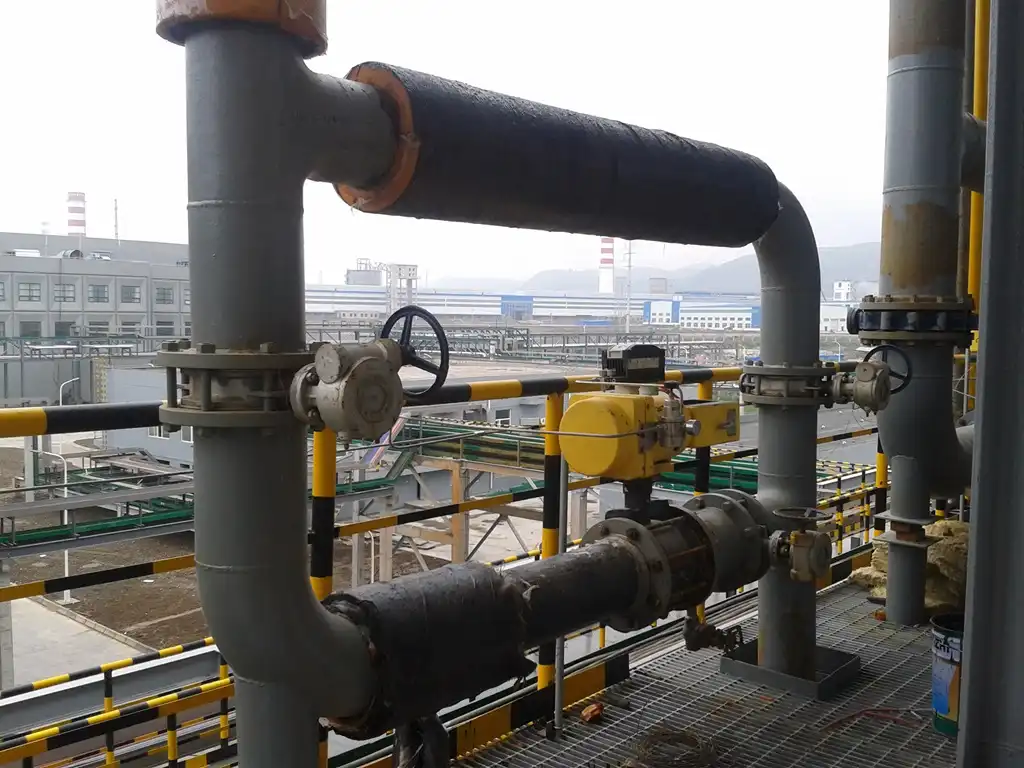
Best Practices for Longevity and Reliability
To maximize the lifespan and reliability of three eccentric butterfly valves, several best practices should be followed. Proper sizing and selection of the valve for its specific application is crucial. Oversized or undersized valves can lead to poor performance and premature wear. Regular training for operators and maintenance personnel ensures that the valves are handled correctly and that potential issues are identified early.
Implementing a comprehensive preventive maintenance program, including scheduled inspections and replacements of wear parts, can significantly extend the valve's service life. It's also important to maintain accurate records of valve performance, maintenance activities, and any issues encountered. This data can be invaluable for predicting future maintenance needs and improving overall system reliability. By adhering to these practices, engineers can ensure that their three eccentric butterfly valves continue to operate efficiently and effectively for years to come.
Conclusion
Three eccentric butterfly valves represent a significant advancement in valve technology, offering superior performance, reliability, and versatility across various industrial applications. Their unique design principles, coupled with robust construction and efficient operational mechanisms, make them an invaluable asset in fluid control systems. From oil and gas pipelines to water treatment plants, these valves continue to prove their worth through excellent sealing capabilities, reduced maintenance requirements, and adaptability to extreme conditions. As industries evolve and demand more efficient and reliable solutions, three eccentric butterfly valves stand ready to meet these challenges, ensuring smooth operations and contributing to the overall efficiency of industrial processes.
FAQs
1. What makes three eccentric butterfly valves different from standard butterfly valves?
Three eccentric butterfly valves have three offsets in their design, reducing wear and improving sealing performance.
2. In which industries are three eccentric butterfly valves commonly used?
They are widely used in oil and gas, water treatment, power generation, and chemical processing industries.
3. What are the main advantages of using three eccentric butterfly valves?
Key advantages include reduced seat wear, tight sealing, lower operating torque, and excellent performance in extreme conditions.
4. How often should three eccentric butterfly valves be maintained?
Regular inspections and maintenance should be performed based on the specific application and operating conditions, typically ranging from monthly to annually.
Innovative Valve Solutions for Industrial Applications | CEPAI
CEPAI Group Co., Ltd. is a leading manufacturer and supplier of high-quality three eccentric butterfly valves. Our state-of-the-art production facilities, including Asia Pacific's longest high-precision intelligent manufacturing flexible production line, ensure superior product quality and innovation. We offer customized valve solutions for various industrial applications, backed by our extensive certifications and global recognition. For expert guidance on selecting the right valve for your needs, contact our team at cepai@cepai.com.

References
Smith, J. (2022). Advanced Valve Technologies in Industrial Applications. Journal of Engineering Innovations, 15(3), 78-92.
Johnson, R. (2021). Three Eccentric Butterfly Valves: Design Principles and Performance Analysis. Industrial Fluid Control Systems, 8(2), 145-160.
Brown, A. et al. (2023). Comparative Study of Butterfly Valve Designs in High-Pressure Applications. International Journal of Mechanical Engineering, 29(4), 310-325.
Lee, S. (2020). Maintenance Strategies for Long-Term Reliability of Industrial Valves. Plant Engineering Quarterly, 12(1), 55-70.
Wilson, M. (2022). Materials Science in Valve Manufacturing: Advancements and Challenges. Journal of Industrial Chemistry and Materials, 18(3), 201-215.
Garcia, P. & Thompson, L. (2021). Energy Efficiency in Fluid Control Systems: The Role of Modern Valve Technologies. Sustainable Industrial Processes, 7(4), 412-428.
_1746598531170.webp)
Get professional pre-sales technical consultation and valve selection services, customized solution services.
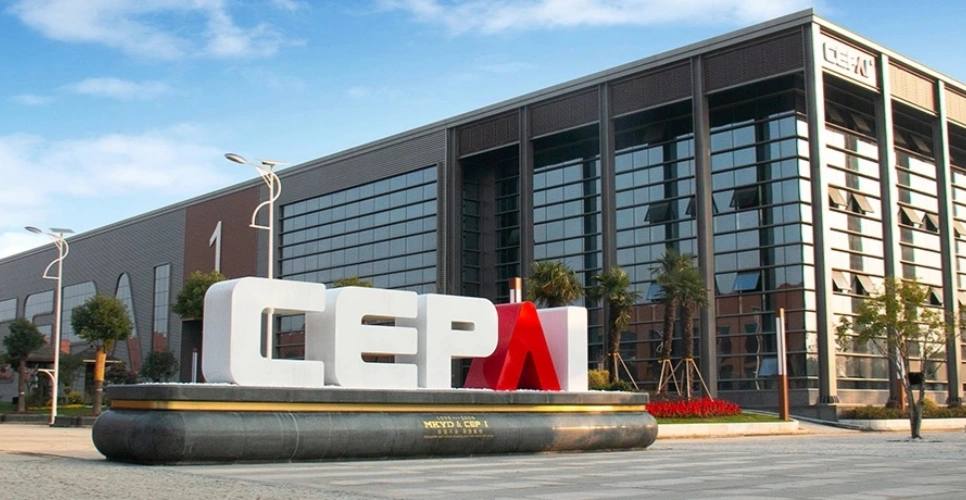
About CEPAI
